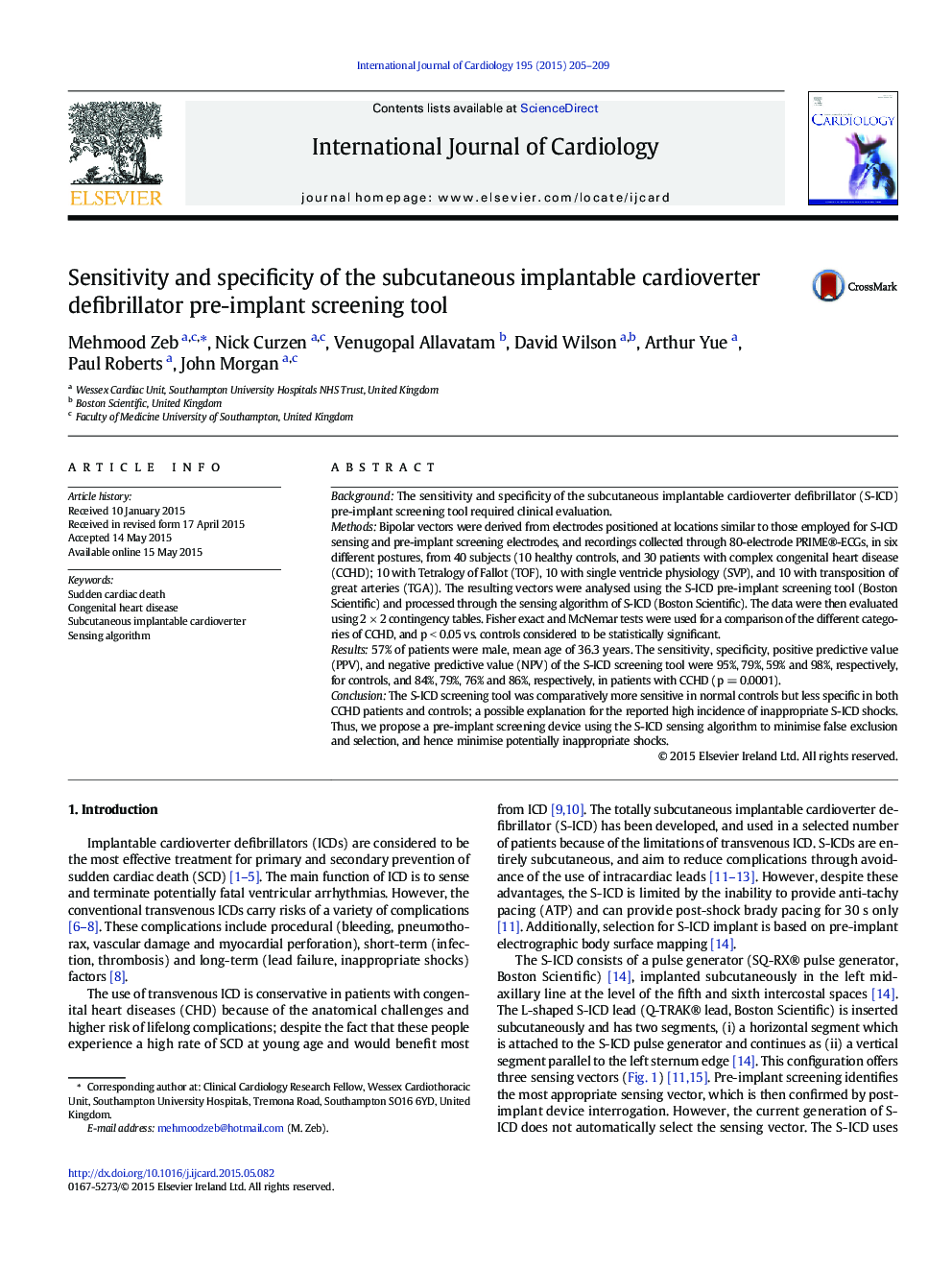| Article ID | Journal | Published Year | Pages | File Type |
|---|---|---|---|---|
| 5966131 | International Journal of Cardiology | 2015 | 5 Pages |
BackgroundThe sensitivity and specificity of the subcutaneous implantable cardioverter defibrillator (S-ICD) pre-implant screening tool required clinical evaluation.MethodsBipolar vectors were derived from electrodes positioned at locations similar to those employed for S-ICD sensing and pre-implant screening electrodes, and recordings collected through 80-electrode PRIME®-ECGs, in six different postures, from 40 subjects (10 healthy controls, and 30 patients with complex congenital heart disease (CCHD); 10 with Tetralogy of Fallot (TOF), 10 with single ventricle physiology (SVP), and 10 with transposition of great arteries (TGA)). The resulting vectors were analysed using the S-ICD pre-implant screening tool (Boston Scientific) and processed through the sensing algorithm of S-ICD (Boston Scientific). The data were then evaluated using 2 Ã 2 contingency tables. Fisher exact and McNemar tests were used for a comparison of the different categories of CCHD, and p < 0.05 vs. controls considered to be statistically significant.Results57% of patients were male, mean age of 36.3 years. The sensitivity, specificity, positive predictive value (PPV), and negative predictive value (NPV) of the S-ICD screening tool were 95%, 79%, 59% and 98%, respectively, for controls, and 84%, 79%, 76% and 86%, respectively, in patients with CCHD (p = 0.0001).ConclusionThe S-ICD screening tool was comparatively more sensitive in normal controls but less specific in both CCHD patients and controls; a possible explanation for the reported high incidence of inappropriate S-ICD shocks. Thus, we propose a pre-implant screening device using the S-ICD sensing algorithm to minimise false exclusion and selection, and hence minimise potentially inappropriate shocks.
